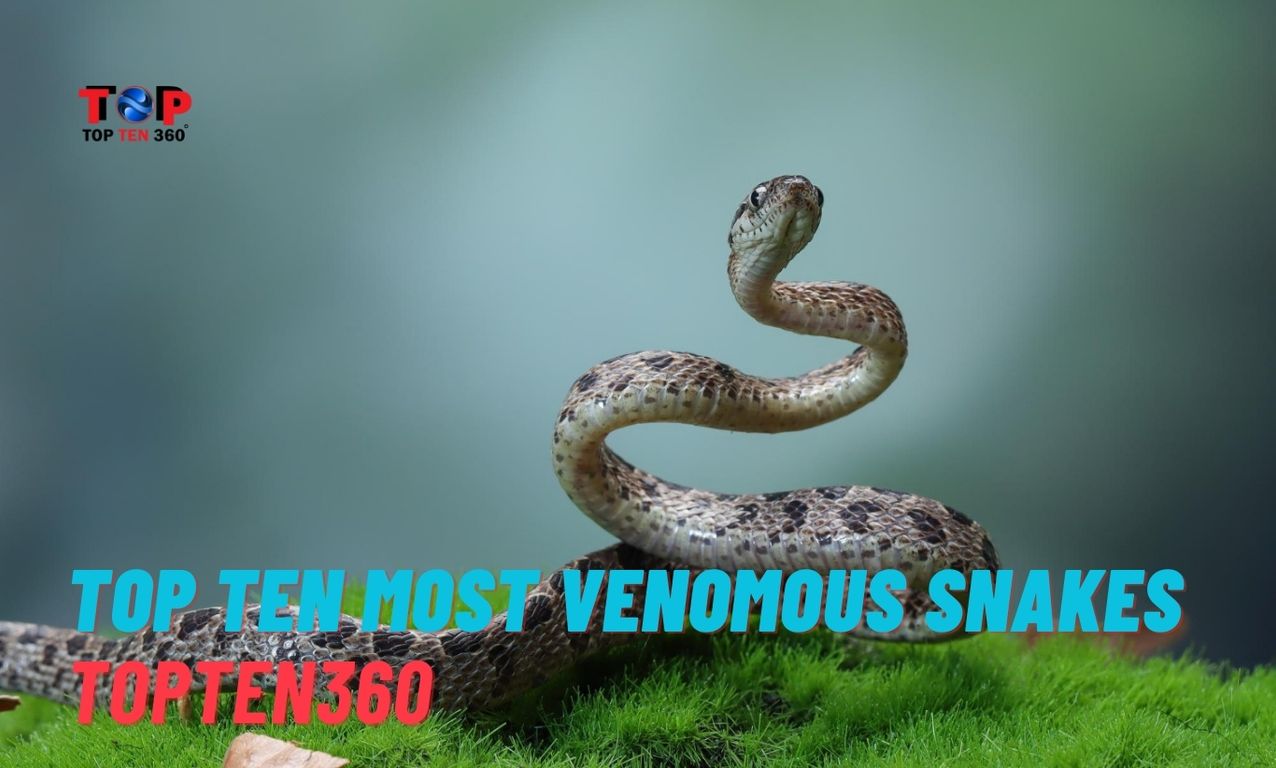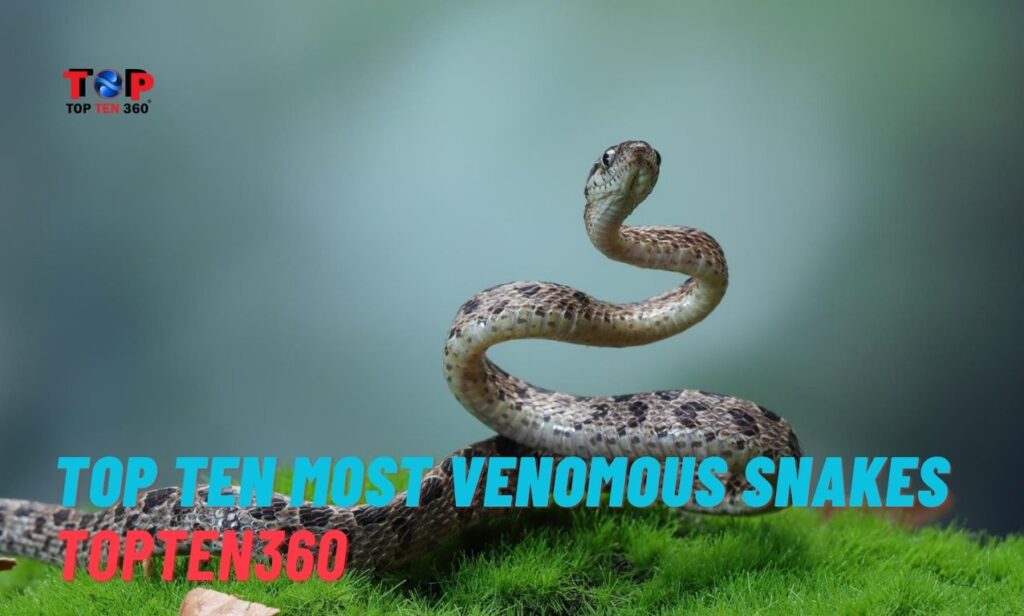Top Ten Most Venomous Snakes
Venturing into the world of the Top Ten Most Venomous Snakes unveils a realm of natural marvels and hazards, where serpentine elegance meets the potent danger lurking within nature’s creations. These remarkable creatures, spanning continents and ecosystems, possess a lethal combination of beauty and lethality. As we embark on this journey through venomous landscapes, it is imperative to unravel the intricacies of these serpents’ venomous arsenals, delving into the evolution and adaptation that have sculpted them into nature’s formidable predators. From the rainforests of South America to the arid expanses of Australia, each snake on this list offers a unique glimpse into the world of venomous serpents, where survival hinges on the mastery of chemical warfare.
The exploration of the Top Ten Most Venomous Snakes takes us on a captivating tour of biodiversity and the delicate balance within ecosystems. These serpents, armed with venoms that can incapacitate prey or deter predators, are a testament to the marvels of evolutionary adaptation. From the iconic inland taipan, boasting the most toxic venom on Earth, to the elusive black mamba, epitomizing speed and lethal precision, each snake has honed its venom as a weapon of survival. Understanding the nuances of their venomous systems not only unravels the intricacies of nature’s design but also underscores the critical role these creatures play in maintaining ecological equilibrium. As we navigate through the intricacies of their venomous adaptations, we gain a newfound appreciation for the delicate dance between predator and prey in the natural world.
1. Black Mamba (Dendroaspis polylepis)
Hailing from the African continent, the Black Mamba is a sleek and agile predator, renowned for its lightning-fast strikes and potent neurotoxic venom. Its name, derived from the inky black coloration of its mouth, belies its deadly reputation. A single bite can deliver a lethal dose of venom capable of incapacitating a human within minutes.
2. Inland Taipan (Oxyuranus microlepidotus)
Native to the arid regions of Australia, the Inland Taipan holds the distinction of being the world’s most venomous snake. Its venom is a complex cocktail of neurotoxins and coagulants, designed to swiftly subdue its prey. Fortunately, due to its shy nature and remote habitat, encounters with humans are rare.
3. Tiger Snake (Notechis scutatus)
Found along the coastal regions of Australia, the Tiger Snake is a highly venomous elapid known for its aggressive temperament and unpredictable behavior. Its venom primarily affects the nervous system, causing paralysis and respiratory failure. The Tiger Snake’s striking banded pattern serves as a warning to potential predators.
4. Russell’s Viper (Daboia russelii)
Inhabiting the diverse landscapes of Southeast Asia, the Russell’s Viper is a formidable predator with a reputation for inflicting severe tissue damage. Its venom contains a potent combination of cytotoxic and hemorrhagic toxins, causing excruciating pain and extensive tissue necrosis. Encounters with this snake are common in rural areas, making it a significant public health concern.
5. King Cobra (Ophiophagus hannah)
The King Cobra, found in the jungles of Southeast Asia, is the longest venomous snake in the world, reaching lengths of up to 18 feet. Its venom is primarily neurotoxic, affecting the nervous system and causing paralysis. Despite its fearsome reputation, the King Cobra is generally shy and avoids confrontations with humans.
6. Gaboon Viper (Bitis gabonica)
Native to the rainforests of Central and West Africa, the Gaboon Viper is a heavy-bodied snake with a distinctive triangular head. Its venom is a complex mixture of cytotoxic and neurotoxic components, causing severe tissue damage and potentially fatal systemic effects. The Gaboon Viper’s large fangs and impressive venom yield make it one of the most dangerous snakes in Africa.
7. Mojave Rattlesnake (Crotalus scutulatus)
Found in the deserts of the southwestern United States and Mexico, the Mojave Rattlesnake is a venomous pit viper known for its potent neurotoxic venom. Its bite can cause severe pain, paralysis, and even death if left untreated. The Mojave Rattlesnake’s distinctive rattle serves as a warning to potential predators.
8. Copperhead (Agkistrodon contortrix)
Inhabiting the eastern and central regions of North America, the Copperhead is a venomous pit viper with a distinctive copper-colored head. Its venom primarily affects the circulatory system, causing tissue damage and internal bleeding. While not typically fatal to humans, a Copperhead bite can be extremely painful and requires prompt medical attention.
9. Cottonmouth (Agkistrodon piscivorus)
Found in the southeastern United States, the Cottonmouth is a semi-aquatic pit viper with a distinctive white mouth lining. Its venom is a potent mixture of cytotoxic and hemorrhagic toxins, causing severe tissue damage and internal bleeding. The Cottonmouth’s aggressive nature and tendency to bask in open areas make it a potentially dangerous snake to encounter.
10. Black-Necked Spitting Cobra (Naja nigricollis)
Native to sub-Saharan Africa, the Black-Necked Spitting Cobra is a highly venomous elapid known for its ability to spit its venom accurately at targets up to 8 feet away. Its venom is primarily neurotoxic, affecting the nervous system and causing paralysis. The Black-Necked Spitting Cobra’s defensive behavior and potent venom make it a formidable predator.

Conclusion:
In concluding our expedition into the realm of the Top Ten Most Venomous Snakes, we are left with a profound appreciation for the complexities of nature’s design and the remarkable adaptations that allow these serpents to thrive. The beauty and danger encapsulated within their venoms remind us of the delicate balance that governs the natural world. As we reflect on their significance, it becomes clear that these creatures, often maligned for their lethal potential, play an integral role in maintaining the health and diversity of ecosystems. The study of venomous snakes extends beyond fascination to a deeper understanding of the intricate web of life, where every species, no matter how perilous, contributes to the grand tapestry of biodiversity.
FAQs about the Top Ten Most Venomous Snakes
Q: What makes a snake venomous, and how is it different from poisonous?
A: Venomous snakes inject venom into their prey through specialized fangs, typically for hunting or self-defense. In contrast, poisonous snakes have toxins that are harmful when touched or ingested. The key distinction lies in the delivery method – injection for venomous snakes and contact or ingestion for poisonous ones.
Q: Are all venomous snakes deadly to humans?
A: While many venomous snakes possess potent venoms, not all are necessarily deadly to humans. Factors such as the type and amount of venom injected, the size and health of the individual bitten, and prompt medical treatment influence the outcome. It’s crucial to exercise caution and seek medical attention in the event of a snakebite.
Q: What is the most venomous snake in the world?
A: The inland taipan (Oxyuranus microlepidotus), native to Australia, is considered the most venomous snake globally. Its venom is extremely potent, containing neurotoxins that can cause paralysis and potentially lead to death if not treated promptly.
Q: How do antivenoms work, and are they effective against all snake venoms?
A: Antivenoms are created by injecting small, harmless amounts of snake venom into animals, usually horses, and then harvesting the antibodies produced. These antibodies are purified and used to treat snakebite victims. However, antivenoms are specific to certain snake species or groups, and their effectiveness depends on correctly identifying the snake responsible for the bite.
Q: What role do venomous snakes play in ecosystems?
A: Venomous snakes play a crucial role in maintaining ecological balance. They help control populations of prey species, preventing overpopulation that could negatively impact vegetation and other animals. Additionally, snakes are both predators and prey, contributing to the intricate web of relationships within ecosystems.
Custom Message:
Thank you for exploring the world of the top 10 most venomous snakes. These creatures, with their captivating adaptations and potent venom, hold a unique place in the natural world. By understanding their behaviors and habitats, we can appreciate their role in maintaining ecological balance and coexist peacefully with these fascinating predators.
Recent Post:
- Top Ten Largest Countries | TopTen360
- Top Ten Board Games | TopTen360
- Top Ten Hottest Peppers | TopTen360
- Inside of a Smart Home | NeynMedia 2024



